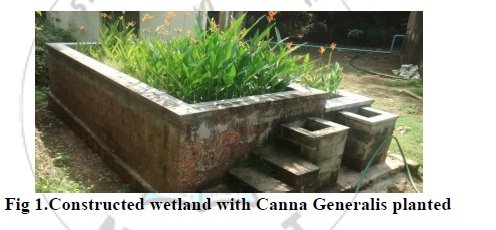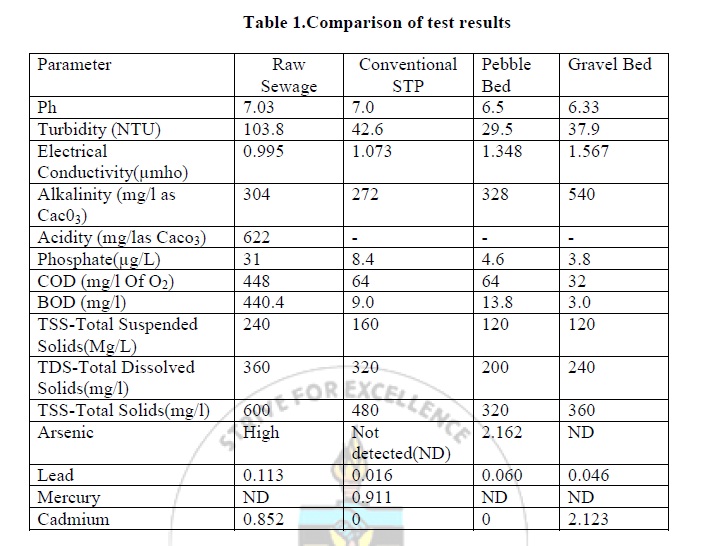





Published on Nov 30, 2023
Water is most essential for sustenance of life on this earth. Due to increase in population and urbanization the demand for fresh water is increasing and fresh water resources are getting polluted. One such method is the estimation of domestic waste water potential through constructed wetland.
Water pollution is the contamination of water bodies. Water pollution affects the entire plants and organisms living in these bodies of water. Water pollution is the leading worldwide cause of deaths and diseases. Cause of water pollution are Industrial waste, sewage and waste water, mining activities, marine dumping, accidental oil leakage, burning of fossil fuels, chemical fertilisers and pesticides, radioactive wastes, animal wastes. Diseases due to water pollution are Cholera, Dysentery, Typhoid, Hepatitis A etc.
A wetland is a land area that is saturated with water, either permanently or seasonally, such that it takes on the characteristics of a distinct ecosystem.Constructed wetlands can be used to treat municipal and industrial wastewater as well as storm water runoff.
Constructed wetlands can be used to treat raw sewage, storm water, agricultural and industrial effluent. Other advantages of constructed wetlands are wetlands can be less expensive to build than other treatment options, utilization of natural processes, simple construction (can be constructed with local materials), simple operation and maintenance, cost effectiveness (low construction and operation costs), process stability etc.There are certain disadvantages like wetland treatment may be economical relative to other options only where land is available and affordable, design criteria have yet to be developed for different types of wastewater and climates etc.
Canna is a species of flowering plants. These perennials come in a vast variety of colour and boast immense, often-veined, paddle-shaped leaves and sheathing leafstalks in shades of green or bronze. It is recommended for bioremediation in domestic wastewater.
In case of conventional methods of treatment of waste water using sedimentation tank there is risk of algae growth which may again contaminate water and hence the treatment using wetland seems to be more safe and efficient.
Keywords : Domestic Wastewater Treatment, wetlands, Canna, Water pollution
The objectives of the present study are
To analyse waste water sample taken from primary sedimentation tank of conventional waste water treatment plant.
To analyse effluent parameters of conventional sewage treatment plant after complete treatment.
To analyse the treated effluent which is treated through the constructed wetland .
To compare treatment potential of constructed wetland system with conventional waste water treatment plant.
Construction of wetland structure by incorporating gravel and pebble as bed material.
Planting of reeds (Cana Generalis) in prepared wetland structure. This is presented in Fig 1
Analysing effluent parameters of treated water from conventional waste water treatment plant.
Analysing sample from wetland system to find efficiency of constructed wetland system.
The samples are tested for various parameters for a detention period of 5days.

All the tests are carried out in the environmental laboratory in accordance with the procedures laid by IS 3025-Reaffirmed 2006.

Based on the study carried out on title “Estimation of Domestic Wastewater Treatment Potential through Constructed Wetland System at Nitte Campus” the following conclusions are drawn.
Approximately 60% reduction in cost is possible if wetland construction with Cana Generalis is used for treatment of waste water.
Comparatively lesser maintenance than the conventional method of water treatment.
No electric power involved so energy consumption is less.
The water treated by this method can be used for gardening, flushing, construction purpose, and decorative purposes.
Sometimes the solids may clog sand bed and weeds that grown need to be inspected regularly.
Studies can be carried out by combining pebble and gravel on a single bed.
Tests on parameters such as nitrate, sulphates, C/N ratio etc, needs to be conducted.
Tests can be conducted by varying the detention period as well.
One of thedrawback is that it may consume additional space and the dimensions should be reconsidered when built in residential areas.
It can give good aesthetic appearance; the treatment can be done at household level itself. Septic tanks can be used for storing waste water accumulated.
The fully grown Cana plants are cut occasionally and maybe used with cow dung in the manufacture of bio gas and as manure.